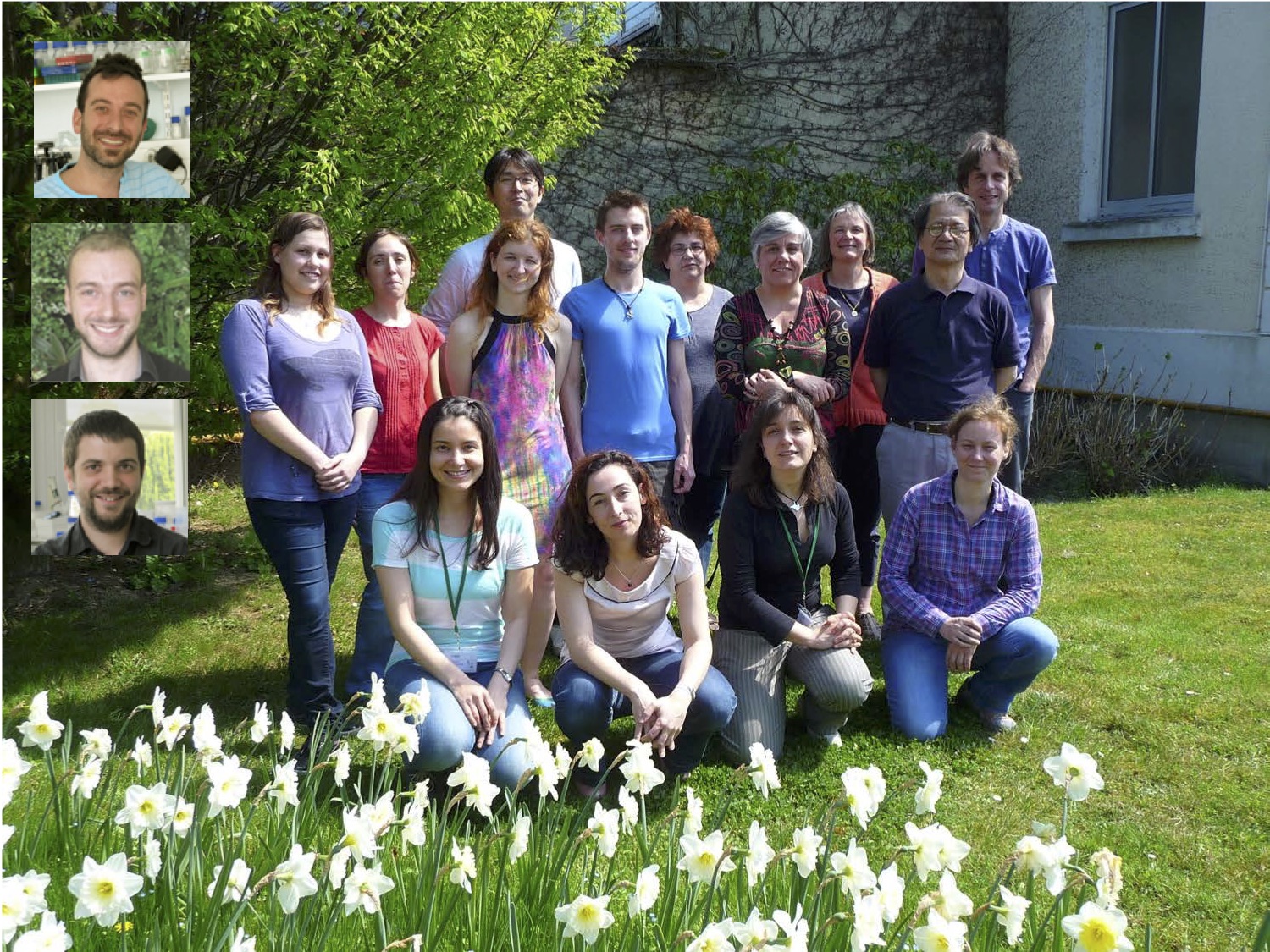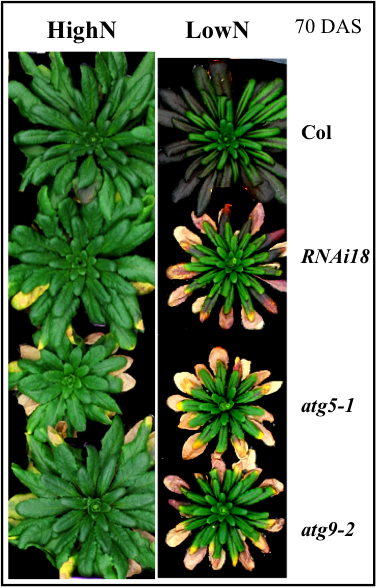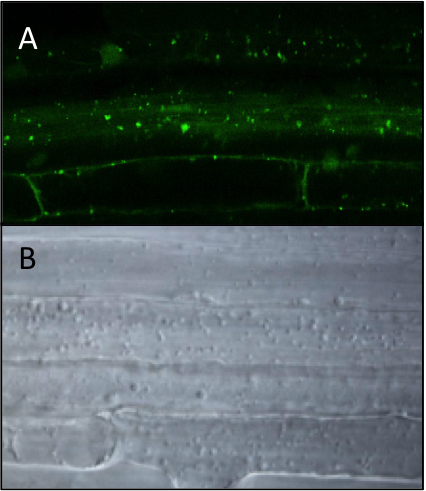Senescence, Autophagy, Nutrient recycling and nitrogen use efficiency
Institut Jean-Pierre Bourgin, UMR1318 INRA-AgroParisTechBâtiment 2
INRA Centre de Versailles-Grignon
Route de St-Cyr (RD10)
78026 Versailles Cedex France - Versailles
Site web - Celine.Masclaux@versailles.inra.fr -
Principal investigator
Céline Masclaux-Daubresse

Research themes
Plants have a fundamental dependence for inorganic nitrogen and million metric tons (MMt) of nitrogenous fertilizers are added to the soil worldwide annually. Nitrogen is one of the most expensive nutrients to supply and commercial fertilizers represent the major cost in plant production. There is serious concern regarding nitrogen loss in the fields that pollutes soils and water. The possibility of lowering fertilizer input and breeding plants with better nitrogen remobilisation efficiency has been considered. This difficult challenge is important to preserve the environment and improve a sustainable and performing agriculture.
AUTOPHAGY is likely to be a key event, allowing the trafficking of substrates for nutrient remobilization to lytic vacuoles. The results obtained in our laboratory give evidences that autophagy controls N remobilisation at the whole plant level and is important for plant productivity and grain filling. In Arabidopsis, autophagy appears to be induced in leaves during senescence and in seeds during maturation. However the nature of the products targeted by autophagy machinery is unknown. Aurtophagy might be involved in degrading chloroplast proteins, which are the main nitrogen ressources present in the leaves. The recent data provided in our laboratory (http://www-ijpb.versailles.inra.fr/en/nap/equipes/recyclazote/index.html) confirm selective Rubisco degradation by autophagy and show that autophagy mutants are over-accumulating specific proteins and peptides that remain to be clearly characterized. In our laboratory we are focusing on the physiology of autophagy mutants with a special interest for nutrient recycling and mobilization during leaf senescence and in response to nutrient (nitrate, sulfate, metals) starvation. Several approaches are use for that as (i) the comparisons of transcriptomic metabolomics and proteomic data obtained on Arabidopsis mutants and wild type control plants, (ii) the observation under microscopy of the kinetics of autophagy induction in plants grown under nutrient limitations and starvations (monitoring autophagosomes) and the observation of organelle’s accumulation in mutants, (iii) biochemical characterization of the cargo degraded trough autophagy using autophagosome isolation and proteomics.
Descriptive figure


Publications
Guiboileau, A., and Masclaux-Daubresse, C. (2012). Autophagic processes in plants: Mechanisms, regulation and function. Comptes Rendus Biologies 335, 375-388.
Guiboileau, A., Sormani, R., Meyer, C., and Masclaux-Daubresse, C. (2010). Senescence and death of plant organs: Nutrient recycling and developmental regulation. Comptes Rendus Biologies 333, 382-391.
Guiboileau, A., Yoshimoto, K., Soulay, F., Bataillé, M., Avice, J., and Masclaux-Daubresse, C. (2012). Autophagy machinery controls nitrogen remobilization at the whole-plant level under both limiting and ample nitrate conditions in Arabidopsis. New Phytologist 194, 732-740.
Guiboileau, A., Avila-Ospina, L., Yoshimoto, K., Soulay, F., Azzopardi, M., Marmagne, A., Lothier, J., and Masclaux-Daubresse, C. (2013). Physiological and metabolic consequences of autophagy defisciency for the management of nitrogen and protein resources in Arabidopsis leaves depending on nitrate availability. New Phytologist 199, 683-694.
Masclaux-Daubresse, C., Clément, G., Anne, P., Routaboul, J., Guiboileau, A., Soulay, F., Shirasu, K., and Yoshimoto, K. (2014). Stitching together the multiple dimensions of autophagy using metabolomic and transcriptomic analyses reveals new impacts of autophagy defects on metabolism, development and plant response to environment. The Plant Cell 2014
Merkulova, E.A., Guiboileau, A., Naya, L., Masclaux-Daubresse, C., and Yoshimoto, K. (2014). Assessment and optimization of autophagy monitoring methods in Arabidopsis roots indicate direct fusion of autophagosomes with vacuoles. Plant Cell Physiology doi:10.1093/pcp/pcu041.
Composition de l'équipe
Liliana Avila-Ospina, Etudiante en thèse ITN Marie Curie
Fabienne soulay, Technicienne INRA
Kohki Yoshimoto, Chercheur invité INRA Package
Ekatarina Merkulova, Etudiante en thèse INRA Package
Loreto Naya, Post-doc INRA Package
German Robert, Assistant professor, invité
Michèle Reisdorf-Cren, Maître de Conférence UVSQ
Anne Marmagne, Ingénieur de recheche INRA
Julien Di Berardino, Etudiant en thèse MENR
Fabien Chardon, Chargé de recherche INRA